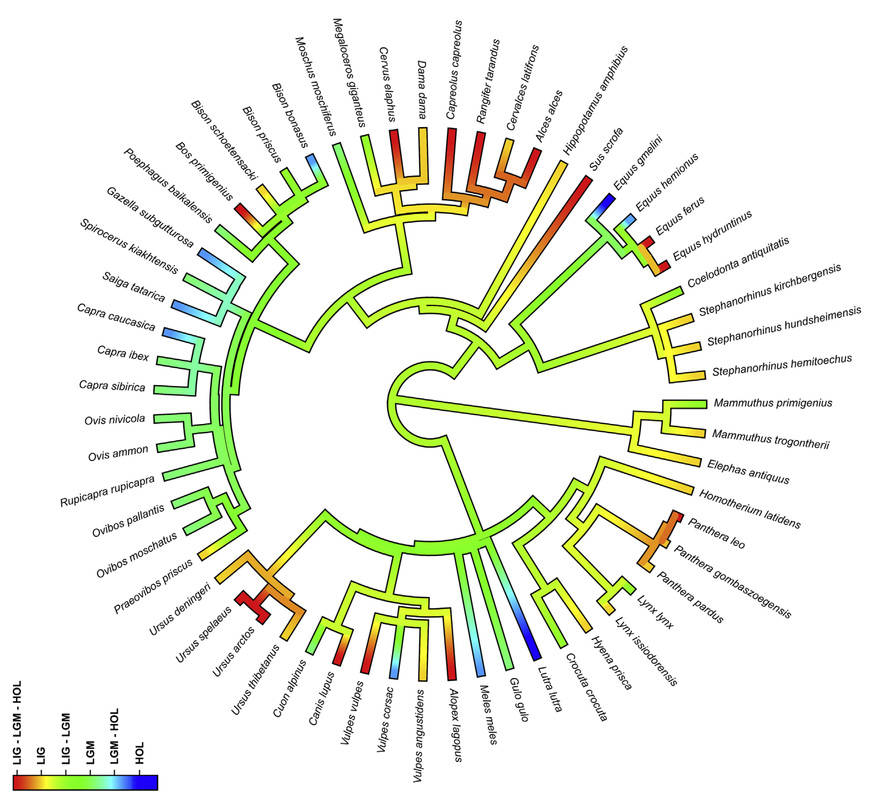Highlights
Climate and the large beasts through the Ice Ages.
|
The phylogenetic tree of the species included in this study. The branch colors are indicative of species age, from the Last Interglacial (red) to the Holocene (blue). (For interpretation of the references to colour in this figure legend, the reader is referred to the web version of this article.) |
© Rayon Club 2016

